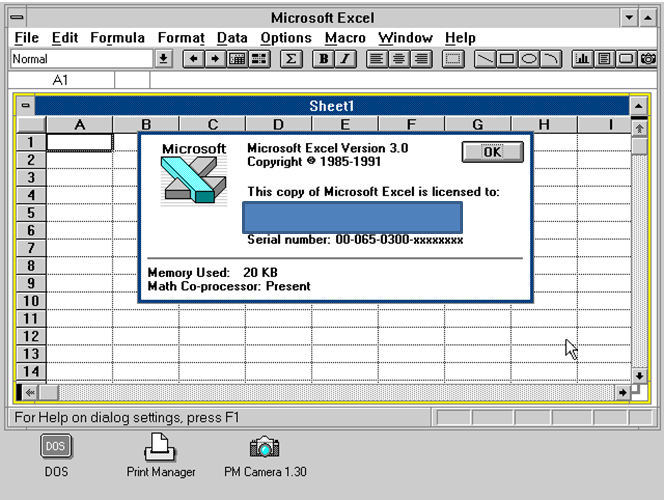- Version Historyepos 4 Excel Formulas
- Version Historyepos 4 Excel Spreadsheet
- Version Historyepos 4 Excel Shortcut

Version Historyepos 4 Excel Formulas
Microsoft Excel is the largest used Reporting and Data Analysis application now a days. Its important to know the Microsoft Excel version history since the version 1. The table below lists the various versions of Excel for Windows.
Version Historyepos 4 Excel Spreadsheet
| VERSION | RELEASED | DESCRIPTION |
|---|---|---|
| 1 | 1985 | Version 1, for the Macintosh was released. There never was an Excel 1.0 for DOS or Windows. |
| 2 | 1987 | Excel 2.0 is the first version of Excel for Intel platform. |
| 3 | 1990 | Included Toolbars, drawing capabilities, outlining, add-in support, 3D charts, and many more new features. |
| 4 | 1992 | The first “popular” version. Included lots of usability features. |
| 5 | 1993 | A major upgrade. Included multi-sheet workbooks. Visual Basic for Applications (VBA) was introduced in this version. |
| 7 | 1995 | Known as Excel 95. The first major 32-bit version of Excel. This is the first major version after Excel 5.0, as there is no Excel 6.0. Almost no external changes, but faster and more stable. |
| 8 | 1997 | Aboutkeinett free alternative minecraft resource packs. Known as Excel 97. A new interface for VBA developers, UserForms, Data Validation, and lots more. This was a major upgrade that introduced the paper clip office assistant and featured standard VBA used instead of internal Excel Basic. It introduced the now-removed Natural Language labels. |
| 9 | 2000 | Included in Microsoft Office 2000. This was a minor upgrade, but introduced the upgrade to the clipboard where it can hold multiple objects at once. The Office Assistant, whose frequent unsolicited appearance in Excel 97 had annoyed many users, became less intrusive.Can use HTML as a native file format, “self-repair” capability, pivot charts, modeless user forms. |
| 10 | 2002 | Known as Excel 2002. Included in Office XP. It has a long list of new features, but most of them will probably be of little value to the majority of users. Perhaps the most significant feature is the ability to recover your work when Excel crashes. This version features product activation technology. Please consider the ramifications of this before deciding whether to upgrade. |
| 11 | 2003 | Known as Microsoft Office Excel 2003. The new features in this version are:
Most users will not find the upgrade worthwhile. |
| 12 | 2007 | Included in Microsoft Office 2007. This release was a major upgrade from the previous version. Similar to other updated Office products, Excel in 2007 used the new Ribbon menu system. This was different from what users were used to, and was met with mixed reactions. One study reported fairly good acceptance by users except highly experienced users and users of word processing applications with a classical WIMP interface, but was less convinced in terms of efficiency and organisation. However, an online survey reported that a majority of respondents had a negative opinion of the change, with advanced users being “somewhat more negative” than intermediate users, and users reporting a self-estimated reduction in productivity. The new features included in this version are:
|
| 14 | 2010 | Included in Microsoft Office 2010, this is the next major version after version 12, as version number 13 was skipped. Minor enhancements and 64-bit support, including the following features:
|
| 15 | 2013 | Monk tier for all of your needs list. Included in Microsoft Office 2013, along with a lot of new tools included in this release:
|
Version Historyepos 4 Excel Shortcut
Muliplan was very popular on CP/M systems, but on MS-DOS systems it lost fame to Lotus 1-2-3. This thing motivated Microsoft to develop another spreadsheet product Excel.The first version of Excel was released in 1985 for Mac. Later in November 1987, the first Windows version was released. It all started with VisiCalc. Excel 2013 is a powerful spreadsheet program designed for professional use across a range of industries. The program is part of the larger Microsoft Office package. That means it is easy to import and export data between other Microsoft programs such as Word or PowerPoint. Excel 2013 allows you to enter rows and columns of data on a large grid.
